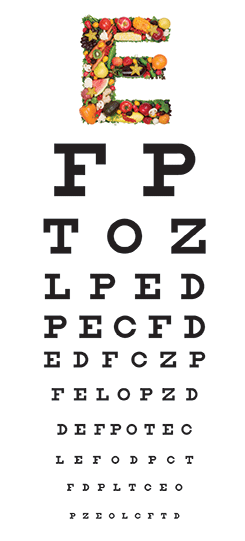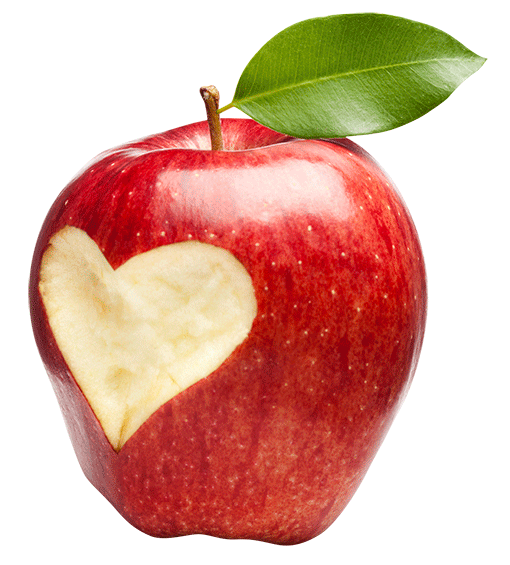Eye Health Shouldn’t Be
“Out of Sight, Out of Mind!”
If it’s not broke it doesn’t need to be fixed, right!? WRONG! Just because you are seeing clearly or do not need vision correction doesn’t mean you should ignore your eye health.
Regular Eye Exams
We don’t hesitate to have our cholesterol or blood sugar checked but it’s easy to forget about the health of our eyes when we are seeing clearly or don’t experience any problems. Regular, comprehensive, dilated eye exams are necessary for the prevention, diagnosis, and treatment of eye disease. Like with all health issues, whether high cholesterol, diabetes, or eye disease, early detection is key!
Early Detection of Eye Disease
Some eye diseases, such as glaucoma, can steal your vision before you notice changes in your sight. Other eye conditions, such as diabetic eye disease and macular degeneration, benefit greatly from early diagnosis and treatment to preserve vision. As you get older you may notice vision changes that can be corrected through cataract surgery. All of these issues and more can be detected through regular eye exams.

The eye is the only place in the body a doctor can view a bare artery, nerve, and vein without the need for a surgical procedure. Ophthalmologists, having gone through medical school, are eye MDs or DOs trained in the general health of the body as well as the intricacies of the eyes. This puts them in a unique position to diagnose systemic conditions through our eyes. Changes occurring in our eyes can sometimes emulate or sooner detect problems happening elsewhere in the body.
- Diabetes: A dilated eye exam detects changes or damage in the small blood vessels of the retina, sometimes before you notice a decrease in vision. The disease may present in the eye tissue even before it affects a blood sugar test.
- Hypertension: High blood pressure triggers changes in the blood vessels of the retina revealing a health condition needing treatment.
- Autoimmunie Disorders: Inflammation, dry or burning eyes, or “bulging” eyes due to retraction of the eyelids can signify disorders such as rheumatoid arthritis, Lupus, or Graves disease.
- High Cholesterol: Diseases can make the walls of your arteries more narrow and block blood flow to the retina leading to risk of central retinal vein occulusion (CRVO) which a dilated exam or fluorescein angiography can detect.
- Cancer: Cancer can occur in the eyes as well as the rest of the body. Pigmentation in the eye or lumps and bumps on the eyelids can discover skin cancer or carcinoma.
- Risk of Stroke: Blood vessel blockage in the retina can be seen through a dilated exam and indicate a higher risk of stroke.
Most everyone knows that diet plays a large part in our heart health. But…did you know, a similar diet, low in fat and rich in fruits, vegetables, and whole grains, makes for healthy eyes too?! Studies have shown a nutrient-rich diet including vitamins C and E, zinc, lutein, zeaxanthin, and omega-3 fatty acids lowers your risk of age-related macular degeneration (AMD), cataract, diabetic retinopathy, glaucoma, cataracts, and dry eye later in life.
Keep your plate colorful!
Eye-healthy food choices include citrus fruits, vegetables and vegetable oils, nuts, whole grains, dark green leafy vegetables, and cold water fish.




Vitamin C and E
Vitamins C and E are antioxidants needed for our immune system, metabolic processes, and the growth and repair of tissues in all parts of the body.2,4 Scientists have found our eyes need high levels of vitamin C to function properly and studies show it helps prevent age-related macular degeneration (AMD) and cataracts.
Our bodies are not able to make and store vitamins C and E on our own making it even more important to include them in our daily nutrition.3
Vitamin C is found in many fruits and vegetables such as citrus fruits, cantaloupe, strawberries, kiwi, and dark leafy greens. Other adequate sources are peaches, chili peppers, bell peppers, tomatoes, broccoli, and brussels sprouts.2
Vitamin E is found in many leafy greens, nuts and seeds, vegetable oils, and margarine. Some cereals are fortified with vitamin E.5
Antioxidants
Lutein and Zeaxanthin are antioxidants needed for our bodies to prevent cancer, type 2 diabetes, amyotrophic lateral sclerosis (ALS), Parkinson’s disease, and heart disease. There are over 600 carotenoid antioxidants and lutein and zeaxanthin are the only two deposited in high quantities in the retina.13 Our eyes benefit from lutein and zeaxanthin by absorbing damaging, high-energy blue light and ultraviolet light aiding the prevention of AMD, cataracts, eye strain, and other eye diseases affecting the retina.6,8
Our bodies do not naturally produce lutein and zeaxanthin so we must get it through the foods and beverages we consume or by taking supplements.0
Foods rich in lutein and zeaxanthin include broccoli, spinach, kale, corn, orange peppers, kiwi, grapes, orange juice, eggs, zucchini, and squash.6,7
Omega-3 Fatty Acids
Omega-3 fatty acids are important for your heart, blood vessels, lungs, immune system, cognitive functions, and endocrine system (hormone-producing glands). Levels of omega-3s are especially high in the retina and help reduce the risk or slow the progression of AMD. Studies also suggest omega-3 fatty acids can improve the function of the meibomian glands, needed to produce the oily layer of the tear film, to protect against dry eye.9,10
Our bodies are not able to make omega-3 fatty acids so we must consume them through food and beverages or supplements.10
The best source of omega-3 fatty acids are shellfish and cold-water fishes such as salmon, tuna, halibut, and sardines. Don’t care for fish? Nuts (particularly walnuts), dark leafy vegetables, fortified foods such as milk, soy, eggs, juices, and yogurt are also good sources. Canola, soy, and flaxseed vegetable oils also provide omega-3 fatty acids.10
Zinc
Zinc is a mineral our bodies need for our immune systems, wound healing, blood clotting, and thyroid function. Zinc also helps us make proteins and DNA. It even affects our senses of taste and smell. Zinc is found in cells throughout the body. Our eyes have a high concentration of zinc and studies have shown zinc decreases the risk of developing AMD.11
Our bodies do not store excess zinc so it is necessary to consume it on a daily basis as part of our diet.11
Food sources of zinc include oysters (the most enriched source), lean red meat, poultry, and seafood such as crab and lobster. Beans of all kinds, especially black-eyed peas, nuts, whole grains, dairy products, and fortified cereals also provide zinc.12
Written By: Kimberley Bader, Patient Education Coordinator
Last Updated: January 26, 2020
![]()


